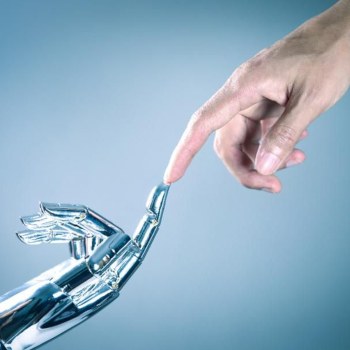
The Workforce Needs AI — But AI Needs Human Workers, Too
Amid rapid advances in artificial intelligence and machine learning technologies, there’s mounting anxiety about what the rise of AI and automation will mean for millions of workers. As machines display ever-more sophisticated cognitive capabilities, generate new efficiencies and yield billions of dollars in cost savings, are we on the cusp of an AI-triggered jobs wipeout?
Given the AI-related fears voiced by eminent figures — from Stephen Hawking to Elon Musk — it’s not an unreasonable question. Moreover, the public’s relative unfamiliarity with the “black box” of what makes artificial intelligence tick breeds popular fear about the long-term consequences of the burgeoning technology, creating a ready-made audience for prophets of doom.
But the public discussion of AI and the future of work too often overlooks the significant benefits AI may bring for work, the employee experience and intellectual diversity. While the full scope of AI’s benefits and drawbacks will hinge on several variables — global economic trends, policy decisions and new technological developments, to name a few — a far more nuanced, far less gloomy picture of the future employment landscape may very well emerge.
Let’s start by dispelling the notion that we’re headed for a zero-sum showdown between human and machine. While more and more tasks will inevitably be automated in the coming years, humans won’t likely be rendered obsolete in an era of machine-dominated singularity. Instead, as the University of California-Berkeley’s Ken Goldberg argues (subscription required), the future will be ruled by multiplicity: humans and machines working alongside each other in an ongoing “feedback cycle” in which both sides mutually benefit from their respective strengths and insights.
One illustrative case in the field of automation: Contrary to widespread fears, the introduction of ATMs didn’t put bank tellers out of work. Instead, by making it less expensive to open and operate a branch, ATMs led to more bank branches opening and more bank tellers being hired. No longer required to perform the more menial aspects of their jobs, tellers were able to focus on nurturing client relationships and other, more complex, human-focused activities.
A similar scenario is likely to play out in many industries as employers implement AI and automation technologies in the years to come. McKinsey estimates that only 5% of current occupations can be fully automated, suggesting that about 15% of workers will be potentially displaced and 3% of workers required to change occupational categories by 2030.
But McKinsey also predicts that most workers will be able to continue in their current roles, augmented by machines. Moreover, McKinsey foresees the creation of up to 890 million new jobs during that period thanks to rising incomes and consumption, increased health care demand, the need for more skilled workers amid technological advances, infrastructure investments, renewable energy adoption and the “marketization” of once-unremunerated domestic labor. Positioning workers for success in the workforce of the future will require ongoing education and training to ensure that their skills and experience match the labor market’s needs and integrate optimally with advances in technology like AI.
Ultimately, then, AI’s impact on work will be determined as much by how we perceive and respond to technologically driven changes as by the changes themselves. As executives, it’s incumbent upon us to act today to adapt our workforces to the realities of tomorrow. If we simply wait for AI and automation to take hold, and only then adapt our employees and their training, we’ll have missed the opportunity to make the best of AI and to do right by our staff.
In an invaluable new study, “Cognitive Diversity: AI & The Future of Work,” Berkeley’s Ken Goldberg and Vinod Kumar, CEO of Tata Communications, lay out how the workplace can be reimagined as AI assumes greater importance. Now is the time, they point out, to work out a strategy to incorporate AI into the organization according to what will likely be able to be handled by machines. This will involve improving worker training, exploring new areas of collaboration for humans and machines, and cultivating the attributes in workers that will make their collaboration with machines most effective.
There’s much we still need to learn about the machines that will define our future, but we humans have a great deal to teach machines as well. Yes, we should be wary of AI overlords assuming control, but that should not preclude efforts to illuminate new possibilities for a positive, beneficial future where machine and human are not adversarial but, rather, complementary.
